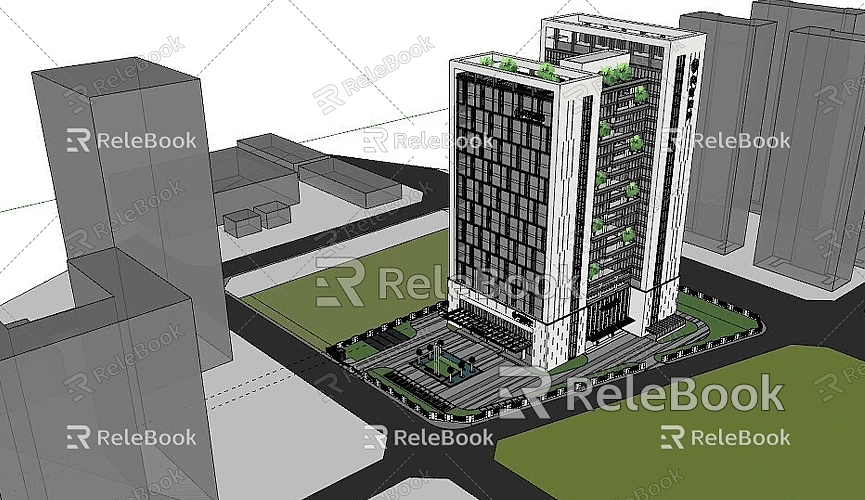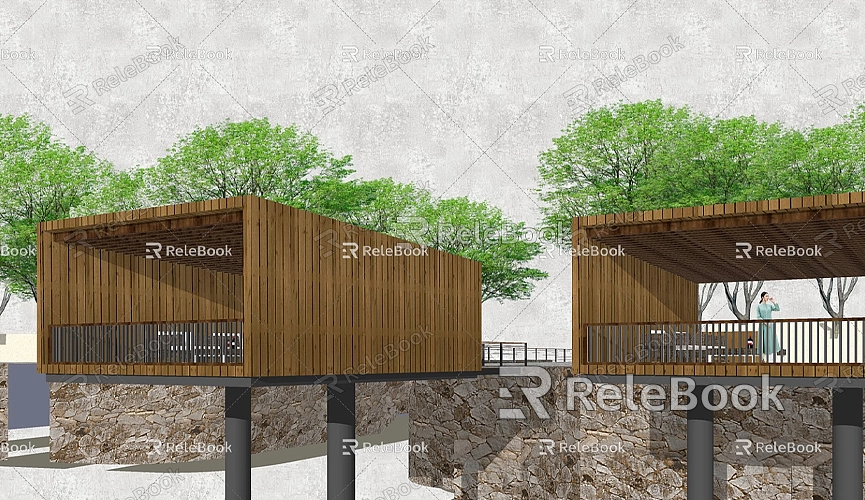How to Convert SketchUp Model to Blender
In the field of 3D modeling, SketchUp and Blender are both highly popular tools. SketchUp attracts many architects and designers due to its simplicity and quick modeling capabilities, while Blender is favored by 3D artists for its powerful features and flexible rendering effects. However, there are times when users need to convert models from SketchUp to Blender to take advantage of Blender's advanced rendering and animation capabilities. So, how can you accomplish this conversion smoothly? This article provides a detailed guide on how to convert SketchUp models to Blender, including steps and useful tips.
Why Convert SketchUp Models to Blender?
Before diving into the specific steps, it’s important to understand why some projects require converting SketchUp models to Blender. While SketchUp is easy to use, its features for materials, lighting effects, and animation are relatively limited. Blender, on the other hand, is a comprehensive 3D software that supports advanced rendering, animation, particle effects, and more, making it ideal for creating more complex visual effects. Therefore, if you want to refine or render SketchUp models in greater detail, or add dynamic effects, converting them to Blender is a great choice.

Preparation: Understanding File Formats
Before beginning the conversion, it is essential to understand the file formats supported by both programs. SketchUp's default file format is `.skp`, while Blender can import various formats including `.obj`, `.fbx`, `.dae`, `.3ds`, and others. Therefore, you will need to export the SketchUp model into a format that Blender can recognize before importing it.
Exporting Models from SketchUp
To convert a SketchUp model into a Blender-compatible format, follow these steps:
1. Choose the appropriate export format: First, open the model you want to convert in SketchUp. Then, click on the “File” menu and select “Export” -> “3D Model.” In the pop-up dialog box, you can choose from several common 3D formats, such as `.dae` (Collada), `.obj`, or `.fbx`. Among these, `.dae` and `.fbx` are excellent choices as they offer high compatibility and can preserve a lot of model information.
2. Adjust export settings: Before exporting, it’s advisable to carefully review the export settings to ensure that all model details are retained. For example, you can choose whether to export materials and textures or include hidden geometry.
3. Save the exported file: After selecting the appropriate file format and export path, click the “Export” button and wait for the export to complete. The exported file will be saved to the specified location.
Importing SketchUp Models into Blender
Once the export is complete, you can proceed to import the model into Blender. Here are the steps:
1. Open Blender: Launch Blender and open a new project. You can create a new blank scene by using the “File” menu and selecting “New.”
2. Import the 3D model: Click on the “File” menu -> “Import,” and then select the appropriate option based on the exported file format, such as “Collada (.dae)” or “FBX (.fbx).” Locate the previously exported file and click the “Import” button.
3. Adjust import settings: Blender typically provides some import settings in the import window. You can choose whether to import materials, animations, and more. Adjust these settings as needed before confirming.
4. Check the imported result: After the import is complete, you should be able to see the SketchUp model in Blender’s viewport. It is recommended to carefully check each part of the model to ensure that no elements are missing or distorted. If you encounter any issues, you can go back to SketchUp, adjust the model, and re-export it.
Optimizing the Model in Blender

Sometimes, models imported from SketchUp into Blender may require some optimization. Here are a few common adjustments:
- Adjust materials and textures: Although you may have chosen to include materials and textures during export, sometimes this information doesn’t display as expected in Blender. You can manually reset the materials and textures in Blender to achieve better visual effects.
- Fix geometry: Occasionally, you may notice issues with the model’s geometry, such as missing or distorted faces. Blender offers tools to fix and adjust the geometry to ensure the integrity of the model.
- Add details: Blender’s modeling tools are more robust, so you can add more details to the original model. For example, you can include texture effects, fine sculpting, and more to make the model more realistic and polished.
- Adjust model scale: The imported model may have scale issues due to different unit settings. In Blender, you can use the scale tool to adjust the proportions so they match other parts of your project.
Exporting the Final Model from Blender
Once you have optimized and adjusted the model in Blender, you can save the final 3D model in your desired format. Blender supports exporting to various formats such as `.fbx`, `.obj`, `.gltf`, and more. This way, you can continue to use the model in other software, or proceed directly to rendering and animation in Blender.
Tips: Using Plugins to Simplify the Process
To make the conversion between SketchUp and Blender even more seamless, consider using some plugin tools. For instance, there are plugins that allow you to import `.skp` files directly into Blender, saving you the trouble of exporting and importing separately. If you frequently need to switch between these two programs, trying out these plugins can save you a lot of time.
Suggestions for Improving Workflow Efficiency
Model conversion can sometimes lead to various issues, such as distorted models or missing materials. Here are some suggestions to improve efficiency:
- Optimize the SketchUp model beforehand: Ensure that the model is clean and tidy in SketchUp, avoiding unnecessary complex geometries and duplicate faces.
- Manage materials properly: Try to use standard materials and avoid excessive use of custom materials, as some may not import into Blender smoothly.
- Leverage Blender's robust features: Since the model is now in Blender, take advantage of its powerful tools to further edit and enhance the model.
Converting SketchUp models to Blender not only allows you to use Blender’s advanced rendering and animation capabilities but also provides a more flexible environment for fine-tuning and optimizing models. By following the steps above, you should now have a solid understanding of the conversion process and be able to smoothly migrate models from SketchUp to Blender.
If you need high-quality 3D textures and HDRI when creating models and virtual scenes, you can download them for free from [Relebook](https://textures.relebook.com/). If you’re looking for exquisite 3D models, visit [Relebook](https://3dmodels.relebook.com/), where you can find a wide variety of premium 3D resources.
Whether you are an architectural designer, 3D artist, or game developer, mastering the technique of converting models between SketchUp and Blender can greatly enhance your work efficiency and creative freedom. We hope this article helps you successfully convert your models, paving the way for a smoother design journey.

